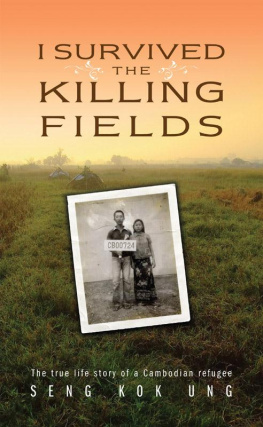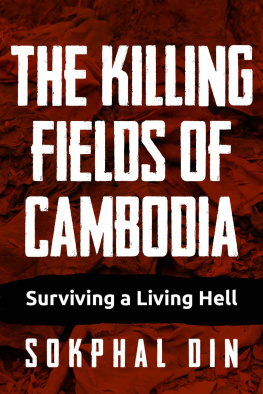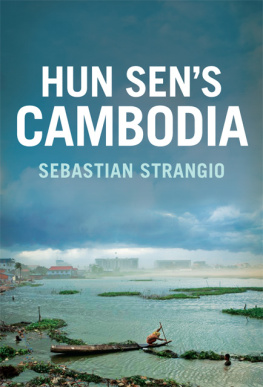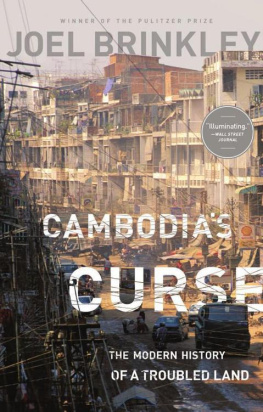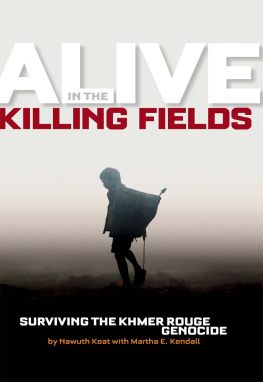BEYOND THE KILLING FIELDS
RELATED TITLES FROM POTOMAC BOOKS, INC.
Bernard Fall: Memories of a Soldier-Scholar
Dorothy Fall
War Stories: False Atrocity Tales, Swift Boaters, and Winter
SoldiersWhat Really Happened in Vietnam
Gary Kulik
Getting Away with Torture: Secret Government,
War Crimes, and the Rule of Law
Christopher H. Pyle
Through Veterans Eyes: The Iraq and Afghanistan Experience
Larry Minear
Overcoming the Bush Legacy in Iraq and Afghanistan
Deepak Tripathi
Breeding Ground: Afghanistan and the Origins of Islamist Terrorism
Deepak Tripathi
Shooting the Messenger: The Political Impact of War Reporting
Paul L. Moorcraft and Philip M. Taylor
The Triumph of the Martyrs: A Reporters Journey into Occupied Iraq
Nir Rosen
BEYOND THE KILLING FIELDS
WAR WRITINGS
SYDNEY SCHANBERG
COMPILED AND EDITED BY ROBERT MIRALDI

Copyright 2010 by Sydney Schanberg
Published in the United States by Potomac Books, Inc. All rights reserved. No part of this book may be reproduced in any manner whatsoever without written permission from the publisher, except in the case of brief quotations embodied in critical articles and reviews.
The Big Picture, in , is an essay from Crimes of War: What the Public Should Know, ed. Roy Gutman and David Rieff (New York: W. W. Norton, 1999). Used by permission.
The other articles in , originally appeared in The New York Times, and to the extent they are reprinted here, they are reprinted by permission. Some articles have been abridged.
, Pol Pots Poison Legacy, originally appeared in Vanity Fair (October 1997). Reprinted by permission.
, How John McCain Buried Information on American Prisoners Abandoned by Washington, originally appeared as McCain and the POW Cover-up in September 2008 on the website of The Nation Institute; an abbreviated version appeared in the October 6, 2008, issue of The Nation.
The War Planned Years Before 9/11 by Cheney and Co., in , originally appeared as The Widening Crusade in the Village Voice (October 1521, 2003) 2009, Village Voice Media. Reprinted with the permission of the Village Voice.
A Reporters Itch to Return to the Actionand the Madness, in , originally appeared as The Itch: Why A Reporter Is Drawn to War, in the Village Voice (March 25, 2003) 2009, Village Voice Media. Reprinted with the permission of the Village Voice.
For additional articles on war by Sydney Schanberg, please visit the website for this book at http://www.beyondthekillingfields.com .
Library of Congress Cataloging-in-Publication Data
Schanberg, Sydney H. (Sydney Hillel), 1934
Beyond the killing fields: war writings / Sydney Schanberg compiled and edited by Robert Miraldi.
p. cm.
Includes index.
ISBN 978-1-59797-505-6 (alk. paper)
1. WarPress coverageUnited StatesHistory20th centurySources. 2. Schanberg, Sydney H. (Sydney Hillel), 1934 I. Miraldi, Robert. II. Title.
PN4888.W37S33 2010
070.44935502dc22
2009044858
Printed in the United States of America on recycled paper.
Potomac Books, Inc.
22841 Quicksilver Drive
Dulles, Virginia 20166
First Edition
10 9 8 7 6 5 4 3 2 1
To Pran and Janewho made it happen
CONTENTS
PREFACE
HOW I CAME TO KNOW WAR AND WHY THIS BOOK
I knew nothing about war when I came out of college, or even after two years as an army draftee, stationed in Germany. It was that no-shooting erathe Cold War with Russia. Then I offered my services to The New York Times, where they hired me as a clerk at $49.50 a week, running errands and copy for the editorial writers on the tenth floor.
Ten years later, in 1969after having covered the police beat, city government, and state governmentI was awarded a foreign assignment as the bureau chief in New Delhi, responsible for South Asia (India, Pakistan, Afghanistan, Nepal, Sri Lanka, etc.). War didnt seem imminent in my new surroundings either. That didnt last very long.
In April 1970 President Richard Nixon, on Henry Kissingers advice, ordered a major military incursion into Cambodia, a small, weak country that had been trying to stay neutral. The American push engulfed Cambodia in the Vietnam War. Extra correspondents were needed at this time to bolster the Saigon bureau and I was one of those sent in.
Later that year, back in South Asia, Pakistani elections gave rise to an autonomy movement in East Pakistan, and in March 1971, the Pakistani army was sent in to crush it. India got involved on behalf of the freedom movement and in December, war was declared and I covered it alongside the Indian advance. The Pakistanis surrendered within two weeks.
My life, essentially, had turned into a war assignment. In 1972, I was sent again to Vietnam when the Communists launched an offensive that lasted about six months.
I also kept returning regularly to Cambodia for long periods. The country was sinking steadily, and I stayed to report the final days as it fell to the genocidal Khmer Rouge guerrillas supported by China.
Why put together a collection of old war stories? What useful purpose does it serve? My answer is simple. To me, now a septuagenarian, it seems that our planetand maybe Washington in particularhas become almost comfortable with regular wars. President Eisenhowers warning to America to beware of the military-industrial complex has been brushed aside.
We Americans are notoriously deficient about taking lessons from our own history. So perhaps this book will remind people what war is really like. Slaughter is no less bestial now than it has been through recorded history.
Armed with this knowledge, the next time a politician says we must invade and destroy evildoers who are being well contained by other means, maybe well think twice.
And, then, maybe we wont.
SYDNEY SCHANBERG
NEW PALTZ, NEW YORK
SEPTEMBER 2009
ACKNOWLEDGMENTS
No book gets created by one person alone. This one wouldnt have come into being if not for two good friendsRobert Miraldi, journalism professor and author, and his wife, investigative reporter Mary Beth Pfeifferwho came to me with the idea, urged me to take it on, and offered to help. Rob agreed to be the overall editor. Mary Beth, among other things, did the archaeology, plowing through boxfuls of my work in search of the wheat.
Other helpers, who did research and detail work, were Dave Savercool, Kelsey Van Norman, Emily Atkin, and Jesse Ordansky. Jeanmarie Evelly handled a special research assignment.
Our agent, Robert Wilson, worked tirelessly in the hunt for a publisher in poor economic times. Our editor at Potomac Books, Hilary Claggett, guided us well throughout.
My thoughts, though, ranged into the past, fixing on people who had shaped my path to becoming a reporterall the way back to Helen Bachose, my high school Latin teacher, and Robert Murphy, the debate coach. And to John Ligon, my army drill sergeant, out of Harlem and the Korean War.
I also owe a great deal to my editors at The New York Times, Newsday, and the Village Voice (the late Sheldon Binn, Tony Marro, and Don Forst), who gave me the freedom to operate independently. I must especially thank Jim Greenfield, Gerry Gold, Allan Siegal, and others on The Timess foreign desk for how they looked after me and my copy during the 1970s, when I was covering wars. I also am indebted to the omnipresent Arthur Gelb for proposing and assigning me to write The Death and Life of Dith Pran when Pran escaped to freedom in 1979.
Next page



